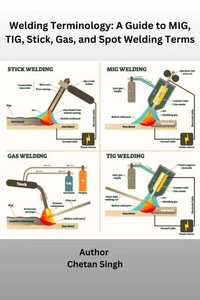Rebound Hammer Test and Non Destructive Testing of Concrete
Par :Formats :
Disponible dans votre compte client Decitre ou Furet du Nord dès validation de votre commande. Le format ePub protégé est :
- Compatible avec une lecture sur My Vivlio (smartphone, tablette, ordinateur)
- Compatible avec une lecture sur liseuses Vivlio
- Pour les liseuses autres que Vivlio, vous devez utiliser le logiciel Adobe Digital Edition. Non compatible avec la lecture sur les liseuses Kindle, Remarkable et Sony
- Non compatible avec un achat hors France métropolitaine
 , qui est-ce ?
, qui est-ce ?Notre partenaire de plateforme de lecture numérique où vous retrouverez l'ensemble de vos ebooks gratuitement
Pour en savoir plus sur nos ebooks, consultez notre aide en ligne ici
- FormatePub
- ISBN8215599792
- EAN9798215599792
- Date de parution18/03/2023
- Protection num.Adobe DRM
- Infos supplémentairesepub
- ÉditeurWMG Publishing
Résumé
Rebound Hammer Test and Non-Destructive Testing (NDT) of Concrete are essential techniques used in the assessment of the quality, durability, and structural integrity of concrete structures. This book provides a guide to the principles, applications, and techniques involved in these methods. The NDT test for concrete and rebound hammer test book starts by introducing the basic properties of concrete, its construction process, and the reasons why testing is crucial.
It then delves into the various methods of NDT, including Ultrasonic Pulse Velocity, Ground Penetrating Radar, and Impact Echo, among others. The focus of the book, however, is on the Rebound Hammer Test, which is one of the most widely used NDT methods for concrete. The book discusses the theory behind the Rebound Hammer Test, how it works, and the factors that affect its accuracy. It provides detailed guidance on how to perform the test correctly and interpret the results.
The book also covers the limitations of the test and its potential sources of error. In addition to the technical aspects of the Rebound Hammer Test and NDT, the book also covers the practical applications of these methods. It discusses how these techniques can be used to assess the quality and durability of concrete structures, identify defects and damage, and plan maintenance and repair activities. The book includes a glossary of key terms and concepts, as well as a comprehensive set of frequently asked questions to help readers understand the material better. Overall, this book is an essential resource for engineers, technicians, and researchers working in the field of concrete construction and maintenance.
It provides a thorough understanding of the Rebound Hammer Test and NDT, including the practical applications and limitations of these methods.
It then delves into the various methods of NDT, including Ultrasonic Pulse Velocity, Ground Penetrating Radar, and Impact Echo, among others. The focus of the book, however, is on the Rebound Hammer Test, which is one of the most widely used NDT methods for concrete. The book discusses the theory behind the Rebound Hammer Test, how it works, and the factors that affect its accuracy. It provides detailed guidance on how to perform the test correctly and interpret the results.
The book also covers the limitations of the test and its potential sources of error. In addition to the technical aspects of the Rebound Hammer Test and NDT, the book also covers the practical applications of these methods. It discusses how these techniques can be used to assess the quality and durability of concrete structures, identify defects and damage, and plan maintenance and repair activities. The book includes a glossary of key terms and concepts, as well as a comprehensive set of frequently asked questions to help readers understand the material better. Overall, this book is an essential resource for engineers, technicians, and researchers working in the field of concrete construction and maintenance.
It provides a thorough understanding of the Rebound Hammer Test and NDT, including the practical applications and limitations of these methods.
Rebound Hammer Test and Non-Destructive Testing (NDT) of Concrete are essential techniques used in the assessment of the quality, durability, and structural integrity of concrete structures. This book provides a guide to the principles, applications, and techniques involved in these methods. The NDT test for concrete and rebound hammer test book starts by introducing the basic properties of concrete, its construction process, and the reasons why testing is crucial.
It then delves into the various methods of NDT, including Ultrasonic Pulse Velocity, Ground Penetrating Radar, and Impact Echo, among others. The focus of the book, however, is on the Rebound Hammer Test, which is one of the most widely used NDT methods for concrete. The book discusses the theory behind the Rebound Hammer Test, how it works, and the factors that affect its accuracy. It provides detailed guidance on how to perform the test correctly and interpret the results.
The book also covers the limitations of the test and its potential sources of error. In addition to the technical aspects of the Rebound Hammer Test and NDT, the book also covers the practical applications of these methods. It discusses how these techniques can be used to assess the quality and durability of concrete structures, identify defects and damage, and plan maintenance and repair activities. The book includes a glossary of key terms and concepts, as well as a comprehensive set of frequently asked questions to help readers understand the material better. Overall, this book is an essential resource for engineers, technicians, and researchers working in the field of concrete construction and maintenance.
It provides a thorough understanding of the Rebound Hammer Test and NDT, including the practical applications and limitations of these methods.
It then delves into the various methods of NDT, including Ultrasonic Pulse Velocity, Ground Penetrating Radar, and Impact Echo, among others. The focus of the book, however, is on the Rebound Hammer Test, which is one of the most widely used NDT methods for concrete. The book discusses the theory behind the Rebound Hammer Test, how it works, and the factors that affect its accuracy. It provides detailed guidance on how to perform the test correctly and interpret the results.
The book also covers the limitations of the test and its potential sources of error. In addition to the technical aspects of the Rebound Hammer Test and NDT, the book also covers the practical applications of these methods. It discusses how these techniques can be used to assess the quality and durability of concrete structures, identify defects and damage, and plan maintenance and repair activities. The book includes a glossary of key terms and concepts, as well as a comprehensive set of frequently asked questions to help readers understand the material better. Overall, this book is an essential resource for engineers, technicians, and researchers working in the field of concrete construction and maintenance.
It provides a thorough understanding of the Rebound Hammer Test and NDT, including the practical applications and limitations of these methods.























